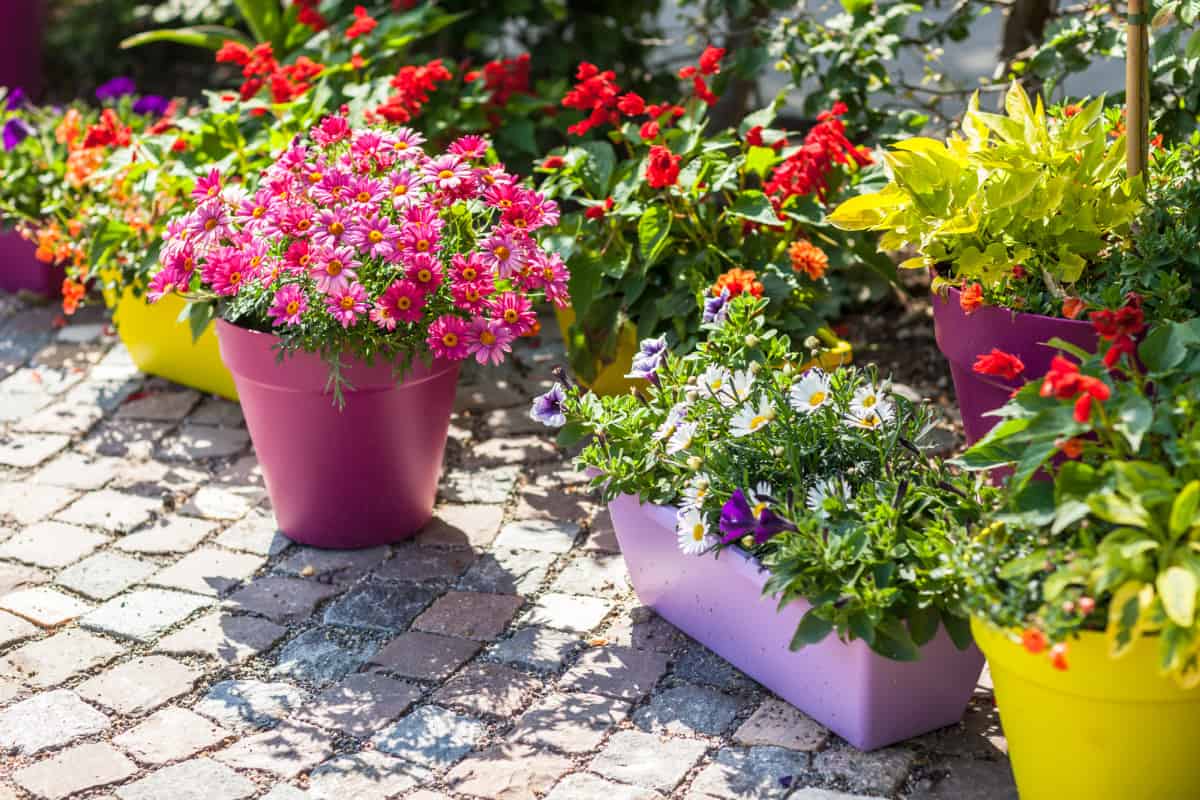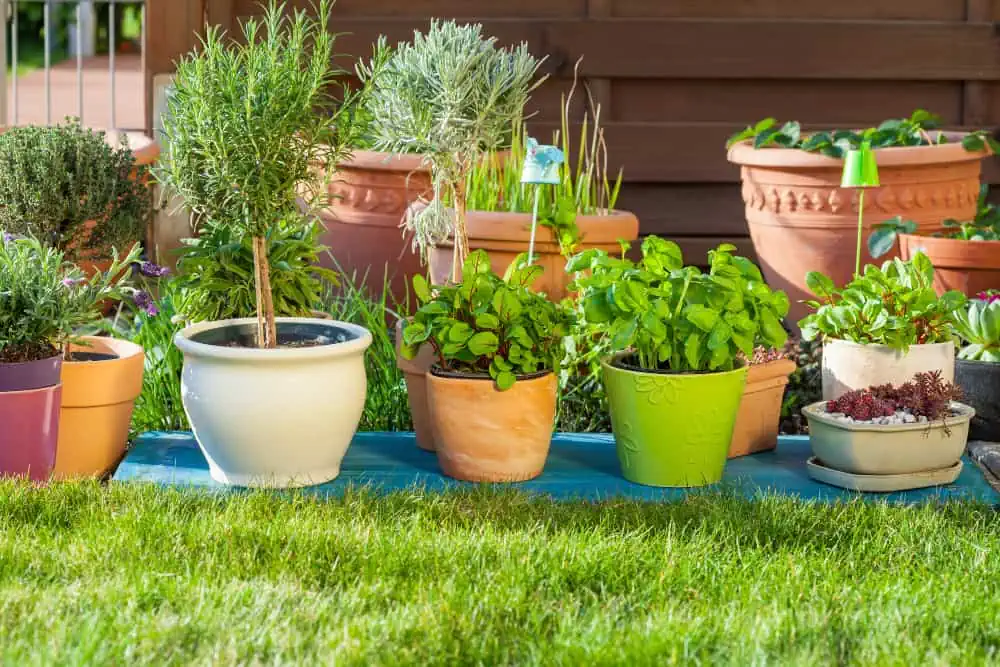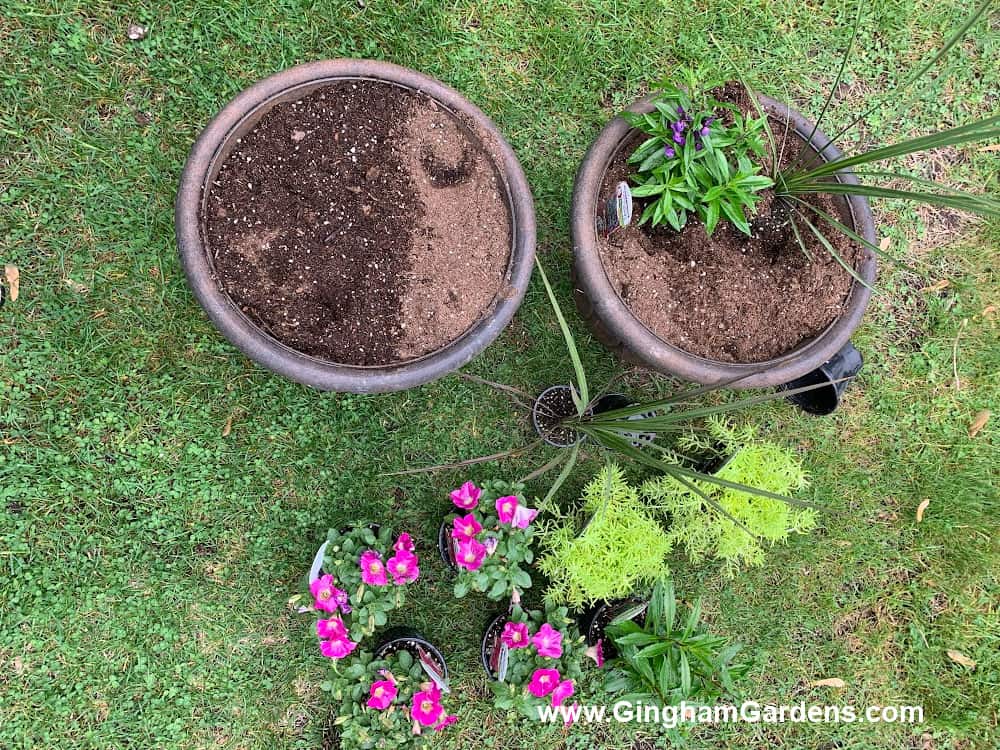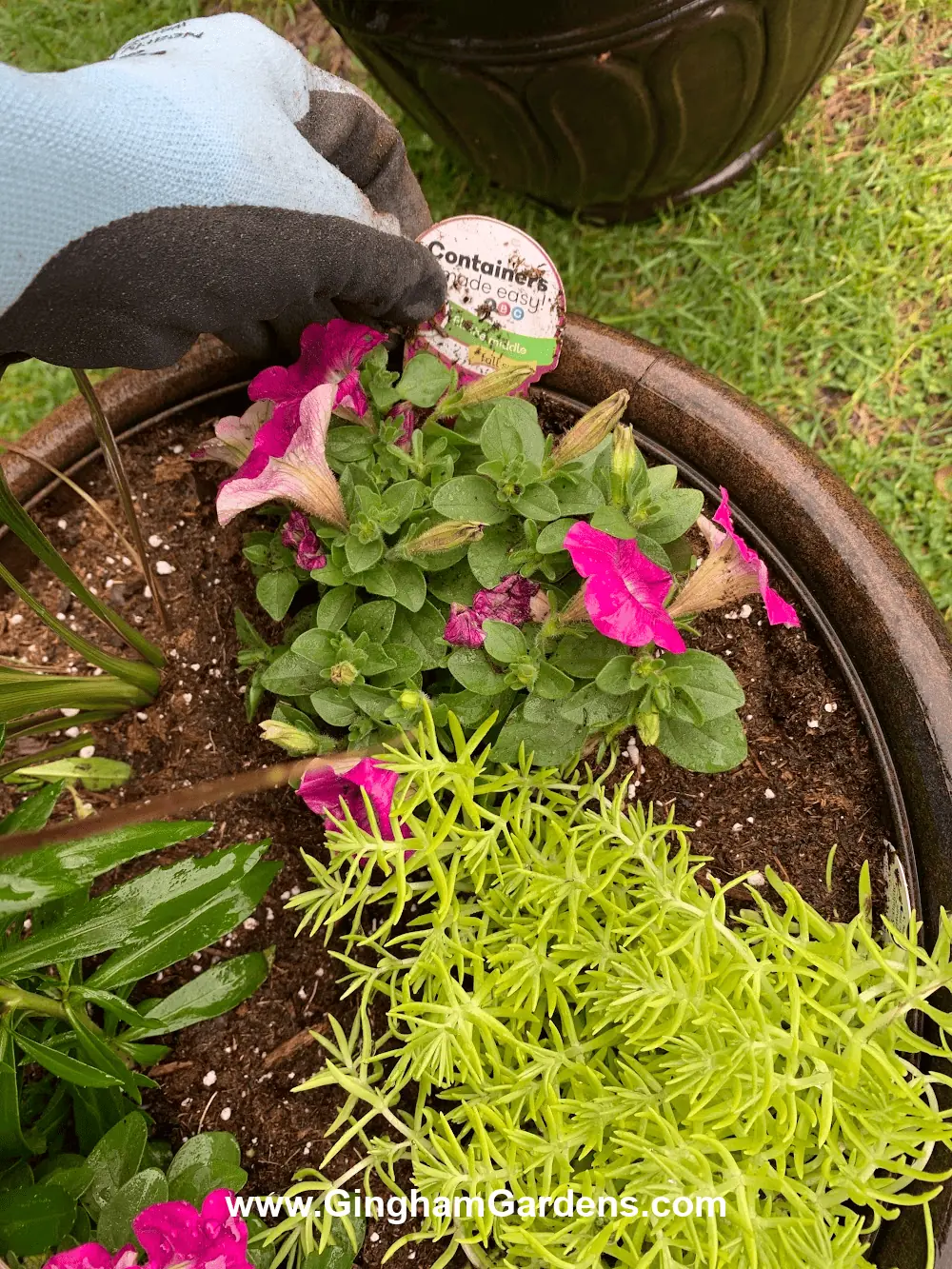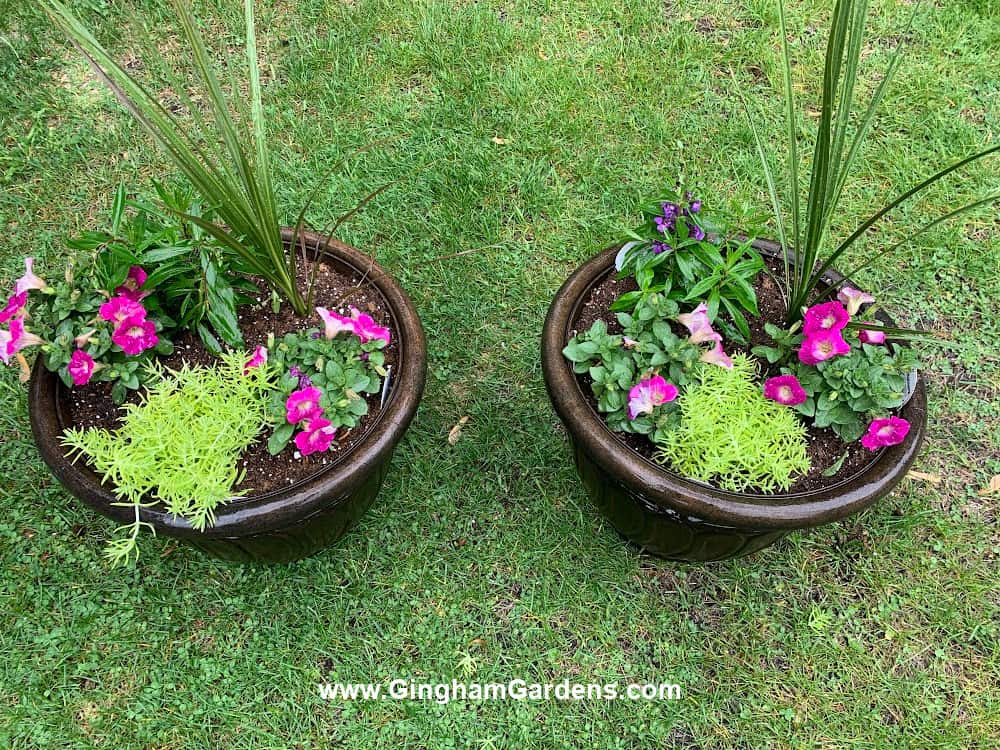Tips for Beautiful Container Gardens All Summer Long
Container gardening is a popular way to add greenery and color to small spaces, patios, and balconies. A container garden is also a good option for filling an empty space in a perennial garden. However, keeping container gardens healthy and thriving can be a challenge. Many gardeners struggle to keep their container gardens looking their best throughout the growing season and many times by the end, their container gardens are looking downright ugly. Fortunately, there are some simple tips and tricks that can help your container gardens thrive and flourish all summer long.
In order to have beautiful container gardens all season, it’s important to start your planters out the right way in spring when you plant them.
Choosing The Right Container
One of the most important factors to consider when planting a container garden is the choice of container. The type of pot doesn’t matter. You can use ceramic pots, galvanized tubs or cans, plastic pots or whatever your choice of container. But, the size of your garden pots do matter!
A container that is too small can limit root growth and will dry out too quickly in the heat of summer. The size of the container matters and can impact the longevity of your container garden.
It’s important to note that unglazed, porous containers like clay or terra cotta dry out quicker than other pottery choices.
As a general rule of thumb, choose a container that is three to four times the size of the root ball of your plant, or the combined root masses of all your plants.
Proper drainage is essential for the healthy plants. Without adequate drainage, the soil can become waterlogged, which can lead to root rot. Choose a container with drainage holes in the bottom to allow excess water to drain out. If you have a container without drainage holes, you can create your own by drilling holes in the bottom.
I like to purchase extra-large pots for my vegetable garden containers. Recently, I purchased some from Costco that didn’t have drainage holes. Definitely a design mistake, but I knew I could drill holes in the bottom, so I went ahead and made the purchase. Antique galvanized washtubs also make great planters, but holes will need to be drilled in the bottom of those too.
This post contains affiliate links. If you click on
one of the links and make a purchase,
I may receive a small commission at no additional cost to you.
See full disclosure here.
What Kind of Soil Works Best for Container Gardens
Another important factor to consider is soil. Choosing the right soil mix is crucial for container gardening success. A high-quality potting soil that is well-draining, yet moisture-retentive, can provide the perfect environment for plants to thrive.
Pro Tip: Never use garden soil or inground soil for your container plantings. It’s too heavy and won’t drain well.
There are many recipes for making your own potting mix on the internet, but I just buy whatever I can find. The ones that say “moisture control” on the package are a good choice. And, I prefer organic for my vegetables.
I try to stay away from those that are mostly made of peat moss (like the regular Miracle Gro one in the green and yellow bag), because those tend to dry out too quickly.
Is It Okay To Reuse the Soil in a Container?
Yes and No. Plants will always grow best in fresh potting mix. That being said, I reuse the soil in my large containers year-after-year and refresh it with compost or new potting soil every spring. At the same time, I add in some slow release fertilizer.
If you experienced disease or pest problems, I recommend not reusing potting soil and cleaning the container with a bleach and water solution.
Is It Okay to Fill the Bottom of a Large Container with Junk?
This is a common question and you’ll see on kinds of ideas and answers on social media. I will answer it from an experienced gardener’s viewpoint. No, it is not okay to fill the bottom of large containers with pop cans, packing peanuts, styrofoam or any other junk. Plant roots with grow the best in a good quality potting soil or organic material.
If you have very large planters, you can fill the bottom of the container with old potting soil, shredded leaves, untreated grass clippings, decaying plant material and twigs. Those items will break down over time and become compost.
If you are concerned about the weight of a large pot filled with soil, you can use a plant dolly. That’s what I use and they work very well.
Select the Right Plants for Your Container Garden
Choosing the right plants is another thing that is crucial for the longevity of your container garden. Here are a few things to keep in mind:
Where is your planter going to be located? In full sun, part sun or shade? It’s important to combine plants that have the same sun or shade requirements. Shade plants in full sun will fry during the heat of summer and will not last. Make sure you choose plants that are appropriate for the amount of sunlight your container garden will receive.
Likewise, it is a good idea to select plants that require the same growing conditions. Don’t plant something that likes moist soil with a plant that likes dry soil. A good example of this is planting succulents, that like dry soil, with a flowering plant like petunias that are thirsty plants.
Some of the best ways to create a great container garden is by experimenting. When shopping for plants take a few minutes to do a little container design right there in your cart. Mix and match until you have the right combination. Also, look around at pre-made container gardens and replicate those.
Always read plant tags when you are selecting plants at garden centers. I like to stick my plant tags along the side of my flower pots, so if a particular plant does especially well I can make note of it in my garden planner.
Don’t be afraid to mix and match different types of plants to create interest and variety in your container garden. Consider using plants with different textures, colors, and heights. For example, pair tall plants (like ornamental grasses) with bushier plants, along with plants that drape over the edge of the planter for a visually appealing contrast. Foliage plants are a nice addition to container gardens too.
Planting Tips to Keep Your Container Looking Great
Although it’s tempting, don’t overcrowd your plants. Don’t try to cram a lot of plants in a small container. Leave lots of space for plant growth. The roots of a plant will double or triple in size and they need lots of room to grow. So, if you want lots of plant variety, go with a large pot.
Container Garden Maintenance Tips
Container gardens are not one and done! They will need lots of attention over the summer to keep them looking their very best. For this reason, I don’t recommend container gardens to those that are looking for low maintenance.
Watering Your Container Garden
Regular watering is key to beautiful container gardens all summer. If you allow containers to dry out and leave them that way, it stresses the plants. All it takes is a couple of times and the plants are toast. Unfortunately this happens a lot when life gets in the way of gardening. Don’t despair though read on to learn about some great watering tips.
Container gardens require regular watering, especially during hot, dry weather. It’s important to water deeply and thoroughly, allowing the water to soak into the soil rather than just wetting the surface.
For best results, position the end of your hose nozzle at the base of the plants in your container and water slowly. That way the water will soak into the soil and roots where it is needed. Water gently until you see water coming from the bottom of the pot. Remember, smaller pots and clay pots will require more frequent watering.
Although it isn’t common, unless you use containers with no drainage, too much water can also be an issue. If leaves of your plant start turning yellow and dropping off, it is likely overwatering.
The Best Tools for Watering Planters
These items work really well if you’re not going to be able to water for a few days, or if you simply don’t have the time to water every day.
- Consider using self-watering pots to ensure your plants get the right amount of water.
- There are also drip irrigation systems available for container gardens.
- I like using these terra cotta spikes along with these blue wine bottles to add continuous moisture to container gardens. These work great if you aren’t going to be able to water your plants during the heat of the day.
- A long handle hose nozzle makes watering container gardens much easier.
Consider mulching your container gardens just like you do your in-ground gardens. Shredded wood mulch or sphagnum moss will work and help to hold moisture in the soil of your planter. Mulch also looks nice, especially when you’ve just planted it and you’re waiting for plants to fill in.
Fertilizing Container Gardens
In addition to these other thing, fertilizer is the secret to beautiful container gardens all summer and should also be applied regularly to provide essential nutrients to the plants. Often times, the potting soil you select will have a slow-release fertilizer mixed into it. Because container gardens are watered frequently, those fertilizers will wash out of the soil quickly.
So if your package of potting mix states “feeds up to 6-months” don’t believe it. You will still need to fertilize. I suggest starting to fertilize about a month after your container garden is planted, and then every week or two thereafter.
For vegetable and herb containers (or anything that will be eaten), I like to use organic fertilizers.
For flower container gardens, I use Miracle Gro bloom booster. With any fertilizer you select, follow the manufacturer’s instructions for application. In the case of fertilizer, more is not better and it is possible to over-fertilize.
Pruning and Deadheading for Beautiful Container Gardens all Summer
Regular pruning and deadheading can help to promote healthy growth and prolong the blooming period of flowering plants. These are my favorite gardening shears.
Deadheading is simply removing spent flowers to encourage the plant to produce new blooms. Deadheading also keeps the plant looking tidy.
Pruning involves removing dead or damaged branches and shaping the plant to promote healthy growth. Many container plants benefit from a good haircut. If plants start looking scraggly, it’s time for a good haircut. The plant might look a little forlorn after a good pruning, but within a couple of weeks it will look fantastic. A few good examples of this are petunias and sweet alyssum. If trailing plants like sweet potato vines start getting too long, they can likewise be trimmed.
Dealing with Common Pest and Disease Issues
First of all, don’t overreact! Just because you see a bug, doesn’t mean it’s a pest. And, just because your plant develops a few yellow leaves, doesn’t mean it has a disease.
If you do see pest damage, isolate that planter, try to determine what the pest is and use an insecticide like neem oil. Please know that just because an insecticide is organic doesn’t mean that it won’t kill beneficial insects along with the bad ones.
In all my years of container gardening, I’ve only had one time when I had to deal with pests in a container garden and I’ve never experienced plant disease in container gardens. I’m not saying it doesn’t happen, but pests and diseases aren’t nearly the problem in container gardens that they are in traditional gardens.
How to Keep Squirrels from Digging in Planters
We talked about mulch above, but an added benefit of mulch is it deters squirrels from digging in your container. If squirrels see freshly dug soil they think something yummy was buried just for them.
Another way to keep squirrels from digging in your flower pots is to sprinkle cinnamon on the soil surface in your planters. I haven’t tried it, but I’ve read that cayenne pepper also does the trick.
Tip: keep a large shaker of cinnamon with your garden supplies, so it’s readily available when you need it.
More Tips for Beautiful Container Gardens all Summer
Don’t be afraid to experiment with different plant combinations and container styles. Mix and match different colors, textures, and heights to create a visually appealing display. With a little bit of creativity and care, your container garden can be a source of joy and beauty for the entire growing season.
To create a focal point in your container garden, consider adding accessories such as rocks, pebbles, or decorative elements like statues or birdbaths. Solar lights are also a great idea.
When your flower planters are looking a little worse for wear at the end of the season, don’t worry you can transition them into fall planters.
Having beautiful container gardens that last all summer long can be achieved with a little bit of planning and effort. By selecting the right plants, using high-quality soil, and providing proper care, you can enjoy a thriving container garden that will last all season.
I hope you’ve found these tips for achieving beautiful container gardens all summer helpful. Do you have an additional tip you want to share? You can do so by leaving a comment below. Have questions? You can also leave those in the comment section and I will answer them.
Happy Gardening,
Joanna
More Great Things on Gingham Gardens
Sign up to receive our weekly newsletters full of gardening tips. You’ll also get access to our Gardening Resources Library and all our helpful gardening printables.
More places to find Gingham Gardens:
- Visit Gingham Gardens on Pinterest.
- If you’re on Facebook, Gingham Gardens is also on Facebook.
- Stop by Gingham Gardens’ Amazon store!
- Love Etsy? Come see us on Etsy too.
Save a pin to your gardening board on Pinterest, so you can remember this post later:

